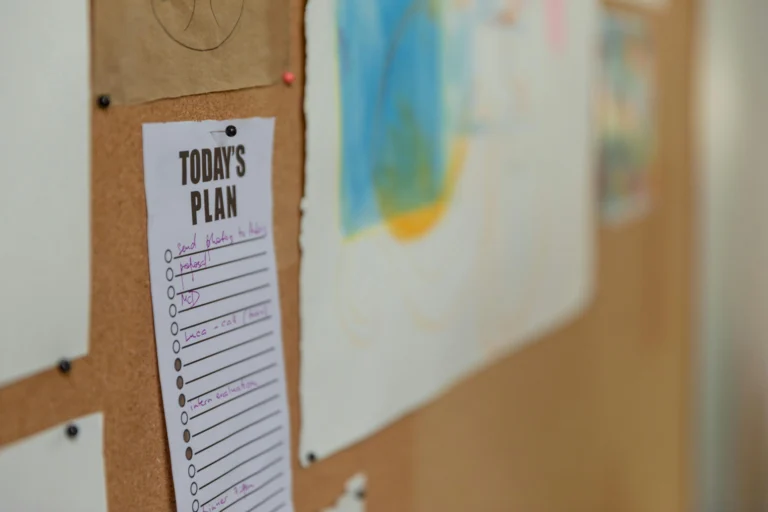Helping kids develop strong time management skills early on sets the stage for lifelong success. Whether they’re juggling homework, chores, or play, giving them the tools to manage their time effectively builds confidence and independence. A tidy, organized space also makes it easier for kids to focus and follow routines—so combining visual tools with practical organizing strategies for families can significantly improve your child’s day-to-day flow. From illustrated charts to kid-friendly apps, here’s a guide to the best time management tools and strategies to help children accomplish tasks, stay focused, and enjoy more free time.
Why Kids Need to Learn to Manage Their Time Early
Teaching effective time management tips early has many benefits. Kids with strong management skills are better prepared to meet deadlines, handle urgent and routine tasks, and successfully balance school and personal life. They also experience less stress, improved mental health, and even more energy even when working on simple tasks, thanks to better routines.

On the other hand, poor time management often leads to missed assignments, rushed mornings, and frustration. It’s much easier to instill good habits when kids are young, rather than trying to correct poor time management skills later in life. Plus, with good time management skills, you reduce stress related to delegating tasks. You can start spending time on certain projects for increased productivity instead of dwelling on time wasters.
Building good habits around time management helps kids develop essential life skills like problem solving, delegation skills, and decision-making—key ingredients for long-term career advancement and overall well-being. Plus, they are a big help when you want to manage your time effectively as a busy parent. Proper time management skills in kids minimize distractions when you need to focus on other projects or subject areas.
Morning and Evening Routine Charts
Mornings and evenings can be chaotic. A time management strategy that really helps is using morning and evening routine charts. These visuals break daily tasks into manageable steps like brushing teeth, getting dressed, or packing a backpack.
Kids love checking off completed tasks, and this simple habit can reduce procrastination and develop early self-discipline. Plus, consistent routines help prevent the kind of parenting mistakes that come from assuming kids “just know” what to do.
Visual Schedules
If your child thrives on structure, a visual schedule is a powerful time management tool. These schedules show the day’s specific tasks using pictures or icons, helping children see what’s next and organize tasks independently.
Visual schedules are especially helpful for kids who get overwhelmed by challenging tasks like organizing the play space or struggle with time constraints. When kids know what’s coming, it reduces anxiety and improves their overall well-being.
Customizable Time Charts
For older kids, customizable time charts can show how their day breaks down hour by hour. These charts help kids understand how to prioritize important tasks and tackle the most urgent tasks first.
This strategy teaches children how to manage their time by helping them plan ahead, set time limits, and visually map out their responsibilities—critical skills for everything from school to personal life management.
Apps for Older Kids
As kids get older, introducing them to a calendar app or to do list app can help them stay organized. Tools like Microsoft To Do, Trello, and Notion allow them to organize tasks, track completed tasks, and even assign time limits to each item.
These apps promote self-discipline, making it easier to meet deadlines and balance other commitments. They’re great for teaching effective time management strategies that kids will carry into high school and beyond, including how to handle projects and creating a decluttering routine for kids.

Visual Timers
Many children have a hard time understanding how long certain tasks actually take. Visual time trackers—like those with a disappearing red disc which you can use on your phone or browser windows—help make the passage of time more tangible. They’re great for things like homework, reading sessions, or even chores kids can handle. You can set a specific time to complete tasks or schedule five-minute breaks for each completed task. It’s good for one’s mental wellbeing since it allows setting boundaries for you as a parent.
Sticker or Star Charts
When kids are learning effective time management skills, positive reinforcement works wonders. Sticker or star charts reward kids for completed tasks, and over time, they begin to associate checking off tasks and meeting important deadlines with a sense of pride. These visual rewards are ideal for motivating kids to keep up with their to-do list, even when they don’t feel like it. It’s a simple yet powerful way to manage time while encouraging the youngest family member to stay motivated ticking off one task at a time.
Verbal Praise
Never underestimate the power of “Great job!” Offering consistent verbal encouragement builds self-discipline and reinforces good time management habits. It’s especially important when kids successfully tackle important tasks or complete something under pressure.
Small Tangible Rewards
Sometimes, earning extra free time, a small toy, or even choosing the family movie night pick can keep kids motivated when completing manageable tasks. These rewards make goal setting feel fun and achievable, and they encourage children to effectively manage even challenging tasks without delay.

